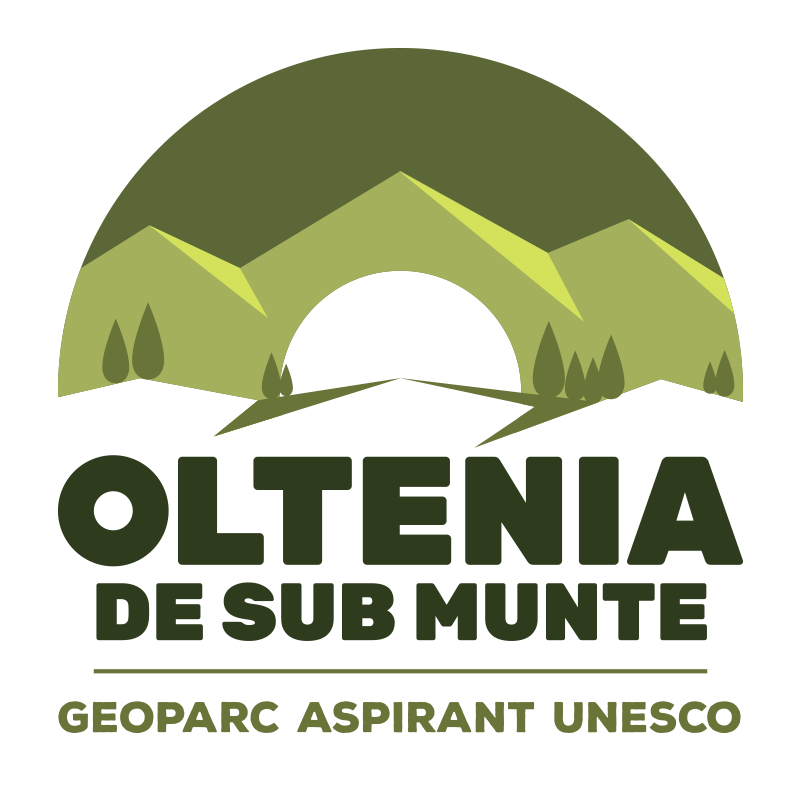What it is
What Geopark means?
It is a territory with natural and cultural values of international importance.
It is a territory of sustainable development whose values and achievements are recognised by UNESCO.
It is an area where efforts are being made for the economic, socio-cultural and educational development of communities, in equilibrium with environmental protection.
What are the benefits of being a Geopark?
Oltenia de sub Munte becomes an internationally recognised territory that will be promoted by UNESCO and the European and Global Geoparks networks.
The status of UNESCO International Geopark is an opportunity for development, especially tourism.
The Geopark is an opportunity for local stakeholders from all sectors (administration, business, civil society, research and politics) to work together to develop projects, products and services that create jobs, business opportunities and income for the local community.
Geopark status brings with it the prestige to attract investment in many areas. It is an occasion for economic and social revival of the area.
Oltenia de sub Munte will become an increasingly visited place, where visitors will spend more time. It will be a place where we will enjoy living. It is a chance for some of the young people who have left to return and even attract others to enjoy the area and move here.
What Geopark doesn’t mean?
A Geopark is not a protected natural area.
The Geopark does not bring any restrictions to the inhabitants. People can go about their daily lives as they have always done.
One can find more details about UNESCO international geoparks on the UNESCO Global Geoparks Network page, which currently consists of 177 geoparks in 44 countries.
How to become a UNESCO International Geopark?
The procedure is standard to all countries in the network, irrespective of national legislation and institutions.
It has the following stages, which last at least 3 years:
- Submission of a letter of intent to UNESCO (once a year, in June).
- Submission of the full application (once a year, in November). It must be proven that Oltenia de sub Munte has values worthy of UNESCO International Geopark status and meets the 101 global criteria.
- Evaluation of the application file by international experts (by May next year).
- If the arguments are relevant and if Oltenia de sub Munte is considered meritorious for international recognition, an evaluation visit by 2 UNESCO experts from different countries takes place between May and September. They will visit the territory of the geopark to discover the places, the people, the values and what has been done so far.
- Depending on the recommendation of the evaluators, UNESCO will take a decision next spring.Attaining UNESCO International Geopark status is not a one-time achievement; it requires ongoing commitment. Every four years, the Geopark undergoes a comprehensive re-evaluation by two international UNESCO experts. The Geopark team must then submit a detailed report, showcasing how the region continues to fulfill UNESCO's criteria, actively contributes to the community's well-being, and enhances the overall quality of the economic, social, natural, and educational environment in Oltenia de sub Munte.
Who will manage the UNESCO Geopark Oltenia de sub Munte?
Kogayon Association team, supported by partners (more than 80 at present), a Scientific Council, and an Advisory Board will manage the Geopark.
Who provides the budget of the UNESCO Geopark Oltenia de sub Munte?
For Oltenia de sub Munte to function as a UNESCO Geopark, it needs a multi-annual budget. Kogayon Association provides a part of this budget. Grants, sponsorships and donations are added to the Geopark budget.
You can also make a meaningful contribution by directing 3.5% of your income tax or 20% of your corporate tax to support the Kogayon Association.
